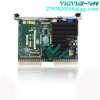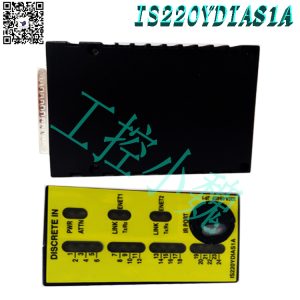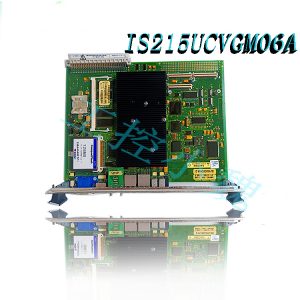Description
Many products have not been listed yet. For more products, please contact us
If the product model is inconsistent with the displayed image, the model shall prevail. Please contact us for specific product images, and we will arrange for photos to be taken and confirmed in the warehouse
We have 16 shared warehouses worldwide, so sometimes it may take several hours to accurately return to you. We apologize for any inconvenience caused. Of course, we will respond to your concerns as soon as possible.
IP QUADRAURE Other names:
Control board IP-QUADRAURE
IP-QUADRAURE analog controller
Orthogonal mode counting pulse input module IP-QUADRATURE
Product Description
IP orthogonality provides high-density and cost-effective four orthogonal flexible decoder channels. Channels can also be used as general-purpose counters. Four independent channels provide 24 bit resolution, programmable mode, programmable polarity, interrupt capability, differential or single ended (RS-422 or TTL/CMOS) input, dynamic reading capability, and counting frequency from 0 to 10MHz.
Orthogonal encoders are popular sensors that provide accurate and low-cost incremental motion sensing. The most common is that they are shaft encoders, providing 512 to 2048 counts per revolution. They are also commonly used as linear encoders with resolutions as low as 0.005 inches. They can provide almost any desired length. Most encoders nowadays are optical, using molded components consisting of a pair of LEDs, lenses, photoelectric sensors, and simple electronic devices. For rotational motion, this component senses the alternating opaque and clear lines on the rotating wheels. For linear motion alternating lines, they can be fixed on a fixed rod and the sensor components can move, or vice versa. This pair of LEDs and light sensors are offset by approximately half the line width, allowing the direction of motion to be sensed by observing the relative phase of the two outputs. A typical orthogonal encoder output is a pair of digital logic signals with a nominal phase difference of 90 °. Some encoders also provide “index” pulse output once per revolution to provide absolute position information. The most modern encoder operates from+5 volts and provides CMOS/TTL logic output and/or RS-422 differential logic output. If possible, it is recommended to use RS-422 due to its inherent noise resistance and long-distance running ability. The TTL logic level should usually be limited to cable feet less than 10. The orthogonal encoder can be sourced from Hewlett Packard, US Digital, and other companies. The universal input structure allows differential input from line drivers (RS-422 level) or direct single ended logic level input from most sensors (“TTL”). The programmable TTL resistor terminator provides flexible and high-quality signal termination. Each channel has three inputs. For normal orthogonal operations, two orthogonal inputs are called X and Y. These inputs are sometimes referred to as A and B lines from the encoder. The X and Y inputs are usually driven 90 ° out of phase. There is also a control input called Z on each channel. Its functionality is programmable, but if used, it is typically operated as an index or latch input. Each channel has a programmable prescaler that can be set for X1, X2, or X4 operation. Fully supports vector interrupts. Interrupts can be individually masked. The optional conditions are the interrupt during borrowing and the interrupt during matching (comparison). RS-422 differential input lines are typically terminated with a 120 Ω resistor.
The most modern encoder operates from+5 volts and provides CMOS/TTL logic output and/or RS-422 differential logic output. If possible, it is recommended to use RS-422 due to its inherent noise resistance and long-distance running ability. The TTL logic level should usually be limited to cable feet less than 10. The orthogonal encoder can be sourced from Hewlett Packard, US Digital, and other companies. The universal input structure allows differential input from line drivers (RS-422 level) or direct single ended logic level input from most sensors (“TTL”). The programmable TTL resistor terminator provides flexible and high-quality signal termination. Each channel has three inputs. For normal orthogonal operations, two orthogonal inputs are called X and Y. These inputs are sometimes referred to as A and B lines from the encoder. The X and Y inputs are usually driven 90 ° out of phase. There is also a control input called Z on each channel. Its functionality is programmable, but if used, it is typically operated as an index or latch input. Each channel has a programmable prescaler that can be set for X1, X2, or X4 operation. Fully supports vector interrupts. Interrupts can be individually masked. The optional conditions are the interrupt during borrowing and the interrupt during matching (comparison). RS-422 differential input lines are typically terminated with a 120 Ω resistor..jpg) Users can delete or replace them with different values if necessary. Each channel consists of a programmable input section, a 24 bit up/down counter block, a capture/match register, and a 24 bit output latch. The output latch allows for precise “dynamic” reading of orthogonal position values. The capture/match register can be used as a hardware “capture” register to record precise mechanical positions or provide any interrupt programmable orthogonal position value. The full CMOS design is essentially low-power. It can achieve up to 16 orthogonal channels in a host system slot.
Users can delete or replace them with different values if necessary. Each channel consists of a programmable input section, a 24 bit up/down counter block, a capture/match register, and a 24 bit output latch. The output latch allows for precise “dynamic” reading of orthogonal position values. The capture/match register can be used as a hardware “capture” register to record precise mechanical positions or provide any interrupt programmable orthogonal position value. The full CMOS design is essentially low-power. It can achieve up to 16 orthogonal channels in a host system slot.
Main functions
• Four orthogonal decoder channels, independently programmable
Any channel can also serve as a universal counter
• 24 bit resolution per channel
DC to 10 MHz universal counting rate
• DC to 1.2 MHz orthogonal counting rate (higher counting rate in X1 and X2 modes)
Counter readable “dynamic” -24 bit output register
24 bit register for capturing or matching interrupts on each channel
Input can be differential input or single ended input
• Directly connected to most sensors
Programmable TTL resistor terminals
Each channel has a programmable control input
Control inputs can be used to capture accurate positions during flight
Each channel can be used as a universal up/down counter
Fully programmable interrupt support
• Programmable mode; Programmable prescalers: 1X, 2X, 4X.
• Programmable polarity for counting and control inputs separately
• All CMOS
• Up to 16 counter channels per VME slot
Input circuit
. The input circuit consists of an RS-422 differential receiver (comparator) with a resistor to achieve termination options. The standard input is differential RS-422, with a 120 Ω cross input terminal. This terminal resistor is socket type and can be removed or changed by the user. The resistor can be replaced, and the input can be TTL or a similar logic level. One side of the RS-422 input is biased by approximately 1.75 volts, allowing for single ended TTL, NMOS, CMOS, or optocoupler inputs for direct connection. When running in this mode, reduce noise at the receiver. IP orthogonality can be converted from RS-422 input to TTL input in the following ways
Remove the RS-422 terminating resistor network from its socket. The TTL input of the terminal network can be electronically switched through software.
This resistor is implemented in the SIP network and can be deleted or changed by the customer, or special orders can be placed by SBS. The typical termination value range is 75 Ω to 330 Ω, depending on the customer’s wiring and driver type.
All products on this website are special products, and market prices have been fluctuating,
The specific customer service quotation shall prevail, as the product is a new product and the price is not genuine,
Please confirm the model, product, price, and other detailed information with customer service before placing an order. The website has been used,
The new one is for sale, please contact customer service to communicate.
Model recommendation:
VMIVME-7614-132
VMIVME-7740-850
VMIVME-7740-850 350-007740-850 L
IC698RMX016-ED VMIVME-5567-100
VMIVME-5567-100
VMIVME-5530S
VMIVME-7645
VMIVME-7696-650
VMIVME-7658-330
VMIVME2170A 333-102170-000
More……




-100x100.jpg)
-300x300.jpg)


admin –
IP orthogonality provides high-density and cost-effective four orthogonal flexible decoder channels. Channels can also be used as general-purpose counters. Four independent channels provide 24 bit resolution, programmable mode, programmable polarity, interrupt capability, differential or single ended (RS-422 or TTL/CMOS) input, dynamic reading capability, and counting frequency from 0 to 10MHz.